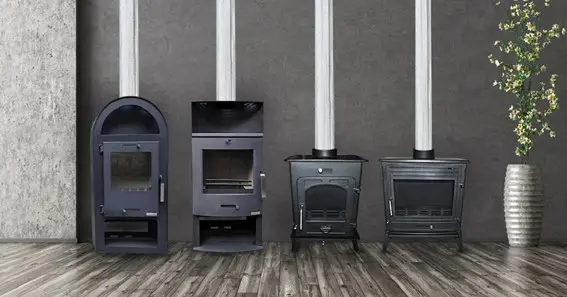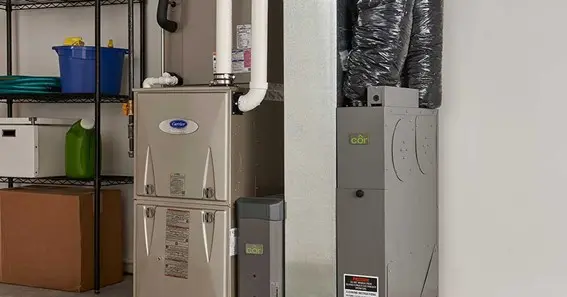What is a furnace? A furnace is a device used to heat materials or spaces by generating and distributing thermal energy. A furnace is necessary for many industrial processes above 752 °F (400 °C). Furnaces are essential for getting things ready for use in production or for finishing specific tasks. Their dependability and durability allow temperatures to be precisely controlled and dependably maintained, which is very important for the success of industrial operations. In this article we discuss about what is a furnace and more about it.
What Is A Furnace?
A furnace is a device used to heat materials or spaces by generating and distributing thermal energy. A furnace generates direct electric or burned heat for high-temperature industrial activities. Many industries utilize furnaces because they can attain and maintain temperatures exceeding 752 °F (400 °C). These uses range from material preparation to production completion. Fuse machines produce steady, controlled heat. They run on electricity or fossil fuels. Because they directly affect industry process quality and success, they are crucial to furnace reliability and effectiveness. Advanced furnaces increase performance and energy efficiency, making them vital to modern manufacturing.
Also Read N: What Is 2nd Shift? Importance Of The 2nd Shift In Various Industries
Things You Ought To Understand About Fireplaces

You must understand how they work to optimize industrial furnaces and streamline manufacturing. These high-temperature equipment are crucial in welding and chemical processing. As we already discuss what is a furnace, now explore furnace types, how they’re used, what temperatures they can handle, their materials, and how control systems and energy efficiency have improved over time can help you choose and maintain the right furnace for your business, ensuring smooth and safe operations.
Variety Of Furnaces
Different industrial processes require different types of furnaces. The most common furnaces are electric, gas, and oil. Electric furnaces are suitable for processes requiring high temperatures because they generate heat using electric resistance or induction. However, gas-fired stoves heat with natural gas or propane. Places that need consistent heat utilize them. Heavy industry usually uses oil-fired boilers because other fuels are scarce or expensive.
Application Process
Furnaces are essential in metalworking, ceramics, glassmaking, and chemical processing. Iron and steel workers use furnaces for casting, forging, annealing, and heat treating to form and strengthen metals. High temperatures in furnaces shape and solidify glass and ceramic materials. Pyrolysis and calcination break down materials in ovens.
Temperature Range
Industrial furnaces can attain and maintain temperatures exceeding 2000 °F (1093 °C). Temperature depends on the substance and procedure. For instance, manufacturing steel requires 3000 °F (1649 °C), while glass requires 2300–2600 °F (1260–1427 °C). Reaching and maintaining these temperatures is crucial for industrial activities.
Construction Materials

Industrial oven materials must withstand high temperatures and thermal stress. Insulating furnaces using high-temperature refractory bricks is common. Others employ insulation to retain heat and save energy. To ensure durability, high-temperature furnace parts use heat-resistant metals.
Control Systems
Using sophisticated control systems, modern industrial furnaces are able to precisely control and measure temperature. These furnaces maintain the appropriate temperature through the use of sensors and automated adjustments, which allows them to function at their optimal level while consuming the least amount of energy. Additionally, modern control systems are able to monitor pressure and airflow, which increases the safety and efficiency of furnace processes.
Energy Saving Tips
If you already know what is a furnace, you must know during the development and operation of a furnace, energy efficiency is of the utmost importance. It is possible to improve the energy efficiency of modern commercial furnaces through the use of control, insulation, and heat recovery technology. It is possible to save energy by using regenerative burners, which recycle the heat from exhaust fumes. Having adequate insulation helps to keep heat inside, and having precise control systems helps to maximise the performance of the furnace.
Taking Care
To ensure their longevity, industrial boilers require regular maintenance. This entails doing routine inspections, cleaning, and replacing components as needed. Maintaining the heater on a regular basis ensures that it continues to perform properly and prevents any unexpected breakdowns. Cleaning stoves, testing and replacing refractory materials, and calibrating control systems are all part of the maintenance process.
Safety Features
There are numerous safety protocols for furnaces that protect both personnel and equipment. In the event that something goes wrong or is hazardous, emergency shut-off systems have the ability to quickly start the furnace. Temperature alarms will notify personnel of any possible problems so that they can take corrective action. There are safety interlocks that prohibit the furnace from starting if the entry doors are open or if there are crucial components missing.
Environmental Impact
If you read properly what is a furnace , you should understand industrial furnaces cause environmental concerns, and attempts to reduce pollutants and improve energy efficiency are ongoing. New furnace technologies reduce harmful emissions, including low-NOx burners and combustion control. Improvements in energy-efficient design have made furnace operations less environmentally hazardous. Research is continuing to make industrial boilers greener.
Also Read P: What Is Shower Gel Used For? Hydration And Moisturization
Conclusion
Many manufacturing processes require industrial furnaces for heat and material preparation. Since they can maintain high temperatures and improve control systems and energy efficiency, they are essential for many modern industrial processes. Knowing about furnace types, how they work, and how vital upkeep and safety measures are will help you get the most out of them and prolong their lifespan. Industrial furnaces should become more efficient and environmentally friendly as technology improves. In above we discuss about what is a furnace and explore more about it.
FAQ
What Primary Function Does A Business Heater Serve?
Processes above 752 °F (400 °C) require direct heat from an industrial boiler.
How Do Gas-Fired And Electric Furnaces Differ?
Electric furnaces generate heat through electric resistance, while gas furnaces burn fuel. Each has its use.
Which Businesses Frequently Utilize Industrial Boilers?
Metal, pottery, glass, and chemical industries employ industrial furnaces for high-temperature processes.
Why Should Furnaces Consume Less Energy?
Energy efficiency lowers costs, protects the environment, and improves processes.
What Safety Features Are Typical For Commercial Furnaces?
Temperature alarms, emergency shut-offs, and safety interlocks protect personnel and equipment in industrial furnaces.
Sources:










